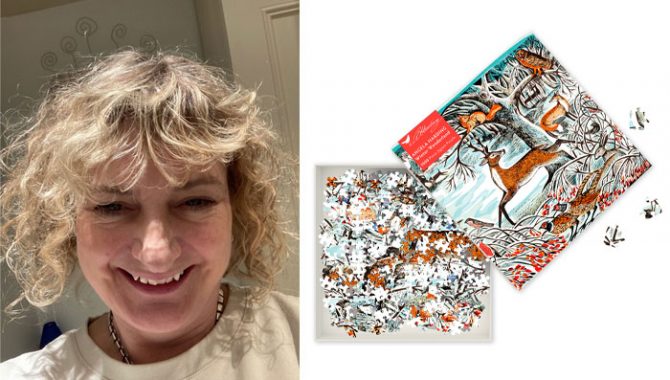—-
To stay in the loop with the latest features, news and interviews from the creative community around licensing, sign up to our weekly newsletter here

Frances Bodiam, MD at Flame Tree Publishing, discusses the firm’s collaborations with brands like The Ashmolean Musuem, The V&A and the Museum of Domestic Design & Architecture
Firstly could you give us a little background to Flame Tree, your products and history?
Flame Tree Publishing is 30 years old this year! We are book publishers of fiction and non-fiction titles, as well as calendars, diaries and gift stationery. Over our three decades we have published all sorts of books, including colour encyclopaedias and some great children’s titles.
At one time, we made a huge range of gift wrap, gift bags, photo albums and photo frames! We’ve always been passionate about encouraging new artists, illustrators and writers and now, more than ever, are concentrating on creating sustainable products which are inclusive and diverse.

Focusing on calendars, I know you source a lot of licences from the heritage sector. What’s a good fit when looking for partners in this sector?
We publish calendars and diaries in partnership with a range of licensors from the bigger heritage institutions like Tate and Royal Academy of Arts, to more specialist regional museums and galleries like Hepworth Wakefield or the Museum of Domestic Design & Architecture.
Calendars are published on the merits of the images that will appear in them – the more commercial they are, the better they will sell! It helps, of course, if the museum or gallery are able to publicise the product and offer it for sale themselves.

Using the example of the Ashmolean Museum, could you talk us through the product development and creative process with a partner like them.
Before any agreement is reached, I try to get to know the museum’s collections as much as I can so I know what the broad perimeters of a license deal might be. The Ashmolean, for example, has a wide and diverse collection of works, so it’s really important to work closely with their teams so that we can develop ideas and product in tandem.
One of my first questions will be about their exhibition programme – the museum will always be keen to have exhibition linked calendars or diaries if that’s possible. Their retail teams too, might have themes or stories planned for the future so I’m always keen to work closely with them too.
If you were advising a museum or gallery who are considering entering the licensing market, what advice would you give them?
The most important starting point would be to ensure that the collection is photographed and digitised, and also that the person who will be representing them knows the collection well and is able to access the images quickly. We are often working to tight deadlines and it’s important to be able to respond to requests quickly.

I know you have enjoyed success with jigsaw puzzles recently. Can you tell us a little bit about that part of your business and how you got involved in the category?
We are still learning about what makes a good jigsaw puzzle and the truth is often that the more intricate and complicated the image, the better the jigsaw will be! We get a lot of art submissions for possible jigsaws or calendars, and I love seeing them.
We have over 90 jigsaw puzzles published and now in stock, the bestsellers are often the ones you least expect them to be, but that’s all part of the fun of publishing!
You also feature a lot of work from individual artists and illustrators. What advice would you give any budding artists or illustrators looking to license their work?
Be prepared before you approach a potential licensee. Have your collections of images ready to send at short notice. Be responsive to requests for information and be prepared to be flexible about how your images are reproduced.
“Calendars are published on the merits of the images that will appear in them – the more commercial they are, the better they will sell!”
We are always scrupulous about respecting how an artist wants their work to be represented but I think sometimes, for an artist, the commercial world can be quite daunting. We spend a lot of time over the year gathering images and planning our programmes. I’m really proud that we take risks in bringing along new artists in calendars and diaries, as well as our gift stationery.
How do you persuade retailers that art, heritage and archival-based products are suited to them?
Fantastic institutions like V&A or Royal Opera House are so well known that retailers will be drawn in by the endorsement of the licence. This, combined with the production quality of the item, gives them assurance that they should order. We’re lucky to have such great licences that the products often sell themselves!

Finally if you had a spare weekend and could visit three or four museums or galleries – distance no object – which ones would you like to visit and why?
What a question! I would go to the Belvedere in Vienna to see originals of Klimt’s work, to Frida Kahlo’s house in Mexico City, Giverny in France to see Monet’s gardens and would visit the tiny island that Tove Jansson’s The Summer Book is based on.
Great answer! Thanks again Frances.
Enter your details to receive Brands Untapped updates & news.